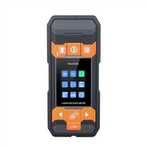How to judge a solid state relay with a multimeter
We detect the good and bad detection of solid state relays when the general use of multimeter is not able to detect, the correct detection method should be this way.
First of all, we first need to look after the detection is complete, it can be connected to its input control terminal 3V to 32V adjustable DC voltage source, then we have to observe the indication of the light-emitting diode can light up normal, then pay attention to the output side does not need to be connected to the load, do not connect to the power supply.
The second step to operate in this way: at this time we can use the pointer multimeter RX1K file to detect the output resistance, if the input control voltage UI <2.7V, the multimeter indicates that the resistance value should be infinite, in other words, the output of the solid state relay should not conduct; we continue to increase the voltage, when the voltage increases to 3V, when the multimeter's resistance value is generally below 10 ohms, indicating that the output of the solid state relay is already conducting.
Finally, the third step: after the first two steps of the test has been normal, we can connect the load and power supply, when the input voltage is 0V, the load is not working; when the input voltage is added to the 5V or so, the load can work. This is to show that the solid state relay is intact, otherwise the solid state relay is faulty and needs to be repaired.






